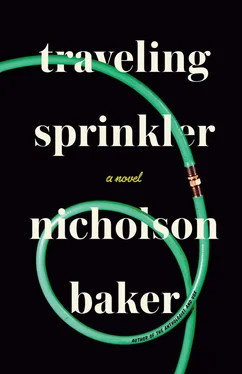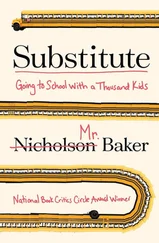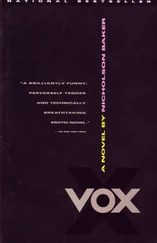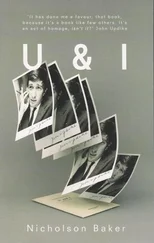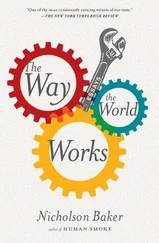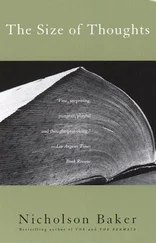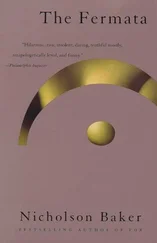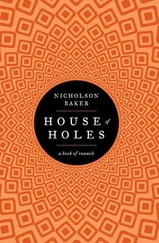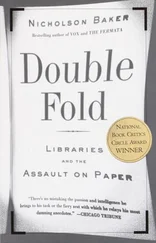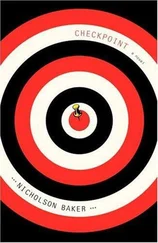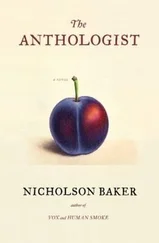Nicholson Baker - Traveling Sprinkler
Здесь есть возможность читать онлайн «Nicholson Baker - Traveling Sprinkler» весь текст электронной книги совершенно бесплатно (целиком полную версию без сокращений). В некоторых случаях можно слушать аудио, скачать через торрент в формате fb2 и присутствует краткое содержание. Год выпуска: 2013, Издательство: Blue Rider Press, Жанр: Современная проза, на английском языке. Описание произведения, (предисловие) а так же отзывы посетителей доступны на портале библиотеки ЛибКат.
- Название:Traveling Sprinkler
- Автор:
- Издательство:Blue Rider Press
- Жанр:
- Год:2013
- ISBN:нет данных
- Рейтинг книги:3 / 5. Голосов: 1
-
Избранное:Добавить в избранное
- Отзывы:
-
Ваша оценка:
- 60
- 1
- 2
- 3
- 4
- 5
Traveling Sprinkler: краткое содержание, описание и аннотация
Предлагаем к чтению аннотацию, описание, краткое содержание или предисловие (зависит от того, что написал сам автор книги «Traveling Sprinkler»). Если вы не нашли необходимую информацию о книге — напишите в комментариях, мы постараемся отыскать её.
Traveling Sprinkler — читать онлайн бесплатно полную книгу (весь текст) целиком
Ниже представлен текст книги, разбитый по страницам. Система сохранения места последней прочитанной страницы, позволяет с удобством читать онлайн бесплатно книгу «Traveling Sprinkler», без необходимости каждый раз заново искать на чём Вы остановились. Поставьте закладку, и сможете в любой момент перейти на страницу, на которой закончили чтение.
Интервал:
Закладка:
Donna said, “Thank you for choosing to come here today.” There was a visitor from Saratoga, New York, who introduced herself. We said, “Welcome.” There were announcements. And then the wooden wall came up and I dropped a twenty in the wicker donation basket. The woman from Eliot, Maine, was there, and she said to me, “I used to listen to my parents’ record of ‘Blackbird’ over and over. You forgot to mention my favorite part, though. He says, ‘Into the light of the dark black night.’”
I drove home thinking, That’s true, that’s the best thing about the song. Singing into the lit blackness of Tennyson’s black-bat night, when suddenly his voice goes high and gives it a bluesy turn that is astounding. He meaning Paul, or Sir Paul as he is called now, and why not? Better that Paul McCartney is knighted than some petroleum baron or air marshal.
Thirty-one
I MAILED ROZ THE BOOK of Mary Oliver’s poems and a CD with some music on it. I was going to include some of my own songs, but I thought better of it. I sent her “Bachianas Brasileiras No. 5,” plus Kate Earl’s “Melody,” Tracy Chapman’s “Change,” McCartney’s “Blackbird” in case she didn’t have it, George Clinton’s “Atomic Dog,” Lennon’s “Imagine,” DNA’s remix of Suzanne Vega’s “Tom’s Diner,” and also, what the hell, Paul Jacobs playing Debussy’s “Sunken Cathedral.” I’ve got “The Sunken Cathedral” coming into my headphones right now. I’m listening to it all the way through for the first time since I began writing this book, if it is in fact a book, and I think it is. You have to be careful not to overlisten to a piece of music you love, or you’ll wear it out — it has to last your whole life. You know it’s there — the weight of the piano is there — but sometimes it’s backstage, covered in quilted padding, waiting for the tuner to arrive and tighten its screws.
I have eight different versions of “The Sunken Cathedral” on iTunes. One version is played by Håkon Austbø—moody and sonorous. One is by Ingrid Fuzjko Hemming — interestingly murky, with good swinging bell-clanging. One is by Elaine Greenfield — brisker and lighter, performed on a 1907 Blüthner grand piano very similar to the one that Debussy owned. One is by Julian Lawrence Gargiulo — a live performance, with a distant energetic piano and audible chair creaks from a fidgeter nearby. One is by Arturo Benedetti Michelangeli — part of the BBC Legends series, with a wrong note enshrined in it two minutes from the beginning. One is by Noriko Ogawa — full of nervous, restrained brilliance and unusual tempos. One is by Claude Debussy himself, playing distantly on a Welte-Mignon player piano in 1914. But my favorite version is by Paul Jacobs, the pianist for the New York Philharmonic, who died of AIDS in 1983. The microphone seems to be right inside Jacobs’s piano. That’s the version I’m listening to now. It’s so closely miked that when you swim into the center of the cathedral about halfway through and look around, the chords are almost unbearably loud — and at the end, when everything’s much softer, and mortality has been faced and accepted, you can hear the felt pads come gently down to dampen the strings as they ring out their last sound.
This piece was Debussy saying good-bye to everything. It isn’t specifically about the lost cathedral city of Ys, off the coast of Brittany, possibly near Douarnenez. That’s a crude, programmatic interpretation that was imposed on the music after the fact by a young critic named Dane Rudhyar and an older pianist named Alfred Cortot, neither of whom knew Debussy well or understood the way his imagination worked. Saying that “The Sunken Cathedral” is about the sunken city of Ys is like saying that “Footsteps in the Snow” is about the Abominable Snowman. It’s true that there is an opera by Édouard Lalo called The King of Ys about the flooding of Ys, based partly on a forged Breton ballad by Théodore Hersart de la Villemarqué, and true that Debussy had wildly applauded Lalo’s ballet Namouna while at the conservatory, and had memorized parts of it, including perhaps the scandalous waltz in which Namouna rolls a cigarette for her paramour — but he was less fond of Lalo’s son, Pierre, who became a powerful and malicious music critic for Le Temps , writing, of Debussy’s La Mer , “I neither hear, nor see, nor feel the sea.” “The Sunken Cathedral” is bigger and blurrier, more overdetermined, than the story of Ys. It’s really about all sunken frightening beautiful artful ruined human things. It’s about Poe’s city in the sea, and about the cathedral cliffs in Tennyson’s “Sea Dreams,” and about the sinking cathedral and the rising lake in Rimbaud’s Illuminations , and about the real flood of the Seine in 1910 that submerged a railroad station in Paris — a newspaper writer called it the “Station of Ys”—and lapped at the foundation of Notre Dame Cathedral. And it’s about the fearsome ruined abbey H. G. Wells saw in his undersea story “In the Abyss,” and about Swinburne’s crumbling, wave-gnawed cathedral town of Dunwich — Debussy admired Swinburne, who was translated by his friend Gabriel Mourey and championed by his friend Pierre Louÿs — and about the watery bells in Brahms’s lost city of Vineta. And it’s about Gerhart Hauptmann’s Sunken Bell , and about Verlaine’s and Huysmans’s cathedrals, and about the “ville disparu” in Victor Hugo’s Légende des Siècles and the underwater reef with “the sublimity of the cathedral” in Hugo’s Toilers of the Sea . And it’s about the article Proust wrote for Le Figaro on the death of the cathedrals. If France’s cathedrals were allowed to fall into ruin, Proust wrote in 1904, the country would be like a beach strewn with giant empty shells. It’s about the loss of nineteenth-century certainties. It’s about all these things. And it’s about Chopin’s preludes, too, which were submerged and dissolved and remade by Debussy, with new harmonic flavors and fragrances, and it’s about the two operas that Debussy knew he would never finish, one based on the Tristan story, and one based on Poe’s “Fall of the House of Usher,” and it’s about the Gothic arches of the inner harp of the piano that he knows he can’t play forever — the black box of hammers that outlives the hammerer. It’s about death and what survives death. It’s about burial at sea. It’s about all the plans and loves and flaxen-haired singers of Debussy’s idle youth that are now no more. It’s about the time he and his friend Gabriel Pierné cut out pictures from a bound edition of Le Monde Illustré and put them up in his room. It’s about the time that Debussy and his wife, Emma, and their young daughter, wearing a big floppy hat, had a wicker-basket picnic in dappled woods. It’s about morphine and despair and undersea sponges and the long-gone days of focused effort when he was a soon-to-be father composing La Mer . It’s about wanting to be a young prizewinning improvisational genius again, and knowing that this moment in C major was the best he could do now. Debussy didn’t normally write in the key of C major. He chose C major this time, I think, because C is like water, clear and simple and bright and transparent, composed entirely of white keys, but if you hold down the pedal and play the clear white notes together in a certain way, the sound becomes blurred and pale blue and lost in haze, like a distant monument seen through water. He swam closer toward the cathedral, and its image became more clearly defined, with pounding, towering, unblurred C major chords, until he reached middle C, or middle sea. That’s what the sunken cathedral is — it’s the piano of his whole life.
Читать дальшеИнтервал:
Закладка:
Похожие книги на «Traveling Sprinkler»
Представляем Вашему вниманию похожие книги на «Traveling Sprinkler» списком для выбора. Мы отобрали схожую по названию и смыслу литературу в надежде предоставить читателям больше вариантов отыскать новые, интересные, ещё непрочитанные произведения.
Обсуждение, отзывы о книге «Traveling Sprinkler» и просто собственные мнения читателей. Оставьте ваши комментарии, напишите, что Вы думаете о произведении, его смысле или главных героях. Укажите что конкретно понравилось, а что нет, и почему Вы так считаете.
